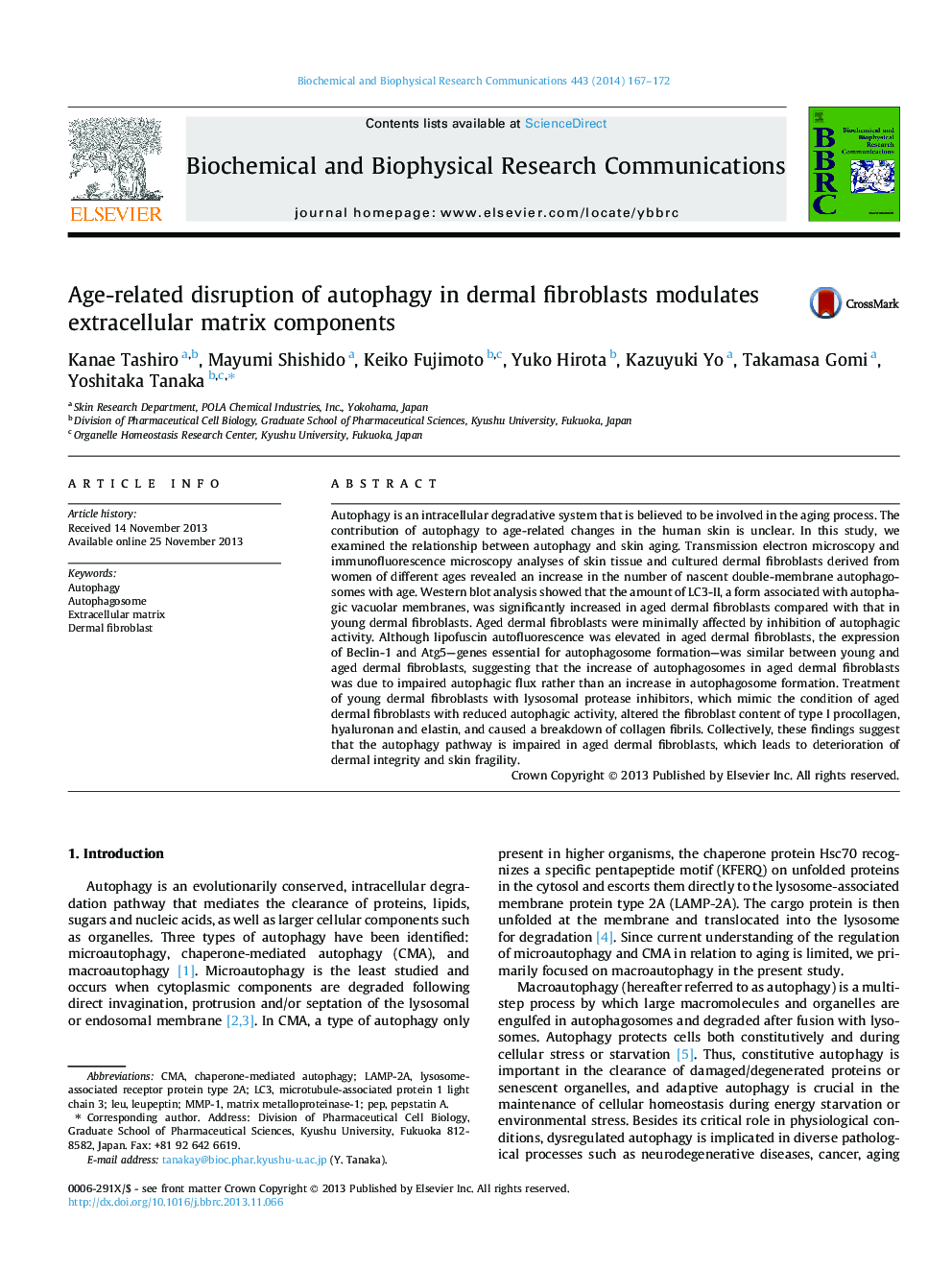| Article ID | Journal | Published Year | Pages | File Type |
|---|---|---|---|---|
| 10757403 | Biochemical and Biophysical Research Communications | 2014 | 6 Pages |
Abstract
Autophagy is an intracellular degradative system that is believed to be involved in the aging process. The contribution of autophagy to age-related changes in the human skin is unclear. In this study, we examined the relationship between autophagy and skin aging. Transmission electron microscopy and immunofluorescence microscopy analyses of skin tissue and cultured dermal fibroblasts derived from women of different ages revealed an increase in the number of nascent double-membrane autophagosomes with age. Western blot analysis showed that the amount of LC3-II, a form associated with autophagic vacuolar membranes, was significantly increased in aged dermal fibroblasts compared with that in young dermal fibroblasts. Aged dermal fibroblasts were minimally affected by inhibition of autophagic activity. Although lipofuscin autofluorescence was elevated in aged dermal fibroblasts, the expression of Beclin-1 and Atg5-genes essential for autophagosome formation-was similar between young and aged dermal fibroblasts, suggesting that the increase of autophagosomes in aged dermal fibroblasts was due to impaired autophagic flux rather than an increase in autophagosome formation. Treatment of young dermal fibroblasts with lysosomal protease inhibitors, which mimic the condition of aged dermal fibroblasts with reduced autophagic activity, altered the fibroblast content of type I procollagen, hyaluronan and elastin, and caused a breakdown of collagen fibrils. Collectively, these findings suggest that the autophagy pathway is impaired in aged dermal fibroblasts, which leads to deterioration of dermal integrity and skin fragility.
Keywords
Related Topics
Life Sciences
Biochemistry, Genetics and Molecular Biology
Biochemistry
Authors
Kanae Tashiro, Mayumi Shishido, Keiko Fujimoto, Yuko Hirota, Kazuyuki Yo, Takamasa Gomi, Yoshitaka Tanaka,
